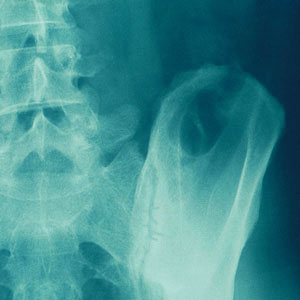
Sacroiliac fracture can occur at the actual joint fault line or can affect the 2 primary anatomical components that come together to form the sacroiliac structure: the pelvic ilium and the sacrum. Fracture to any of these tissues can be a devastating injury to bear and may involve significant functional impairment and the need for dramatic medical intervention to repair in some cases.
Bone fractures come in many different severities. They can also be caused by a range of possible sources and are certainly not limited to traditional forms of extreme trauma. The best way to treat fractures in and around the SIJ depends on the health of the patient, the effects produced by the fracture, the cause of the fracture and other case-specific factors, making these injuries very complicated to manage medically.
This dialog provides a complete view of fracture in the sacroiliac joint region. We will discuss how and why fracture can occur, what tissues it may affect and how SIJ fractures should be treated for optimal therapeutic results.
Sacroiliac Fracture Origins
Fractures in and around the sacroiliac can affect the joint fault line itself where the sacrum and pelvic ilium join together. Fracture can also affect the sacrum, often near to where the sacroiliac resides or the pelvic ilium. The sacroiliac is one of the strongest joints n the body and the bond between the pelvis and sacrum is unbelievably resistant to trauma. Therefore, it is most common for the pelvis to fracture near the joint fault line, since the pelvic ilium is the weakest section of bone of all 3 structures.
Fracture can of course be caused by all the usual forms of injury that might create bone breakage anywhere in the anatomy. These sources include car accidents, falls, acts of violence, sporting traumas and other types of tissue damage. However, fractures can also occur for other reasons, including all of the following causations:
Osteopenia and osteoporosis can cause bones to fracture easily. This type of fracture is often experienced in the hip and pelvic regions.
Ankylosing spondylitis and rheumatoid arthritis typically attack the sacroiliac joint, compromising its strength and durability. When fractures do result in the joint itself, these 2 diseases are often the underlying cause, usually in combination with trauma to the region.
Obesity is a major contributor to fracture in the region of the sacroiliac. Since the joint is weight-bearing, it must handle a huge amount of stress in morbidly obese people. Similarly, spinal compression fracture might also affect the sacrum in rare cases, usually in obese patients who also demonstrate old age or some form of bone porosity condition.
Fractured SIJ Effects
Fractures can come in many severities, including hairline cracks that do not require medical care, minor fractures, moderate fractures and severe fractures. Simple, complex and compound fractures are all possible and increase in clinical severity in the order listed.
Fracture to the SIJ, the pelvis or the sacrum can be catastrophic. Patients will typically be completely unable to bear weight on the affected side and may not be capable of standing at all, depending on the particulars of the fracture location and severity. Physical activity is basically out of the question for patients with a sacroiliac fracture of any significant severity.
The region of the pelvic girdle also contains a large number of complex soft tissue attachments and interactions. Severe fractures of the pelvic region can play havoc with these muscles, tendons and ligaments and create functional issues even after the fracture has been repaired and fully healed in some cases.
Sacroiliac Fracture Treatment
Treatment for sacroiliac joint fracture comes in different forms, depending on the particulars of the patient’s conditions and the nature and severity of the fracture. Below, we provide some of the possible approaches to fracture repair in the sacroiliac joint:
Minor conditions can often be simply monitored and allowed to heal organically. This includes hairline cracks in bones in otherwise healthy patients. Dietetic supplements or pharmaceutical products might be provided to improve bone growth.
Some patients with minor fractures will require physical therapy to help speed healing and rehabilitate the injured region.
Surgery might be required to stabilize and reduce serious fractures. If the fracture is along the actual sacroiliac joint, the joint will likely be surgically fused to prevent recurrence and improve structural stability. The worst fractures in the pelvis and sacrum might require hardware assisted reconstruction via invasive or minimally invasive surgery. All postoperative patients will need to undergo considerable rehabilitative care.
Sacroiliac Joint Pain > Causes of Sacroiliac Pain > Sacroiliac Fracture





